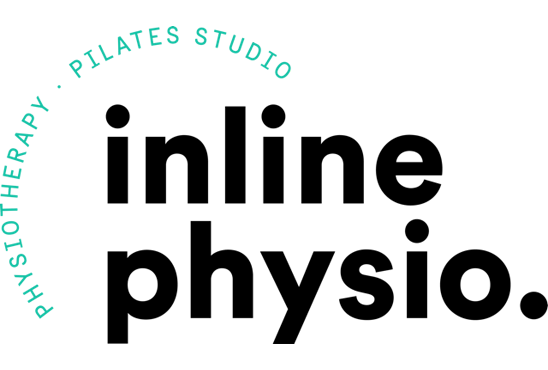
Hypermobility and flexibility are often perceived as positive attributes, yet those with Hypermobility Spectrum Disorders can experience adverse symptoms that impact their quality of life.
In this blog, we discuss:
- Hypermobility and Hypermobility Spectrum Disorders,
- Symptoms of Hypermobility Spectrum Disorders,
- Diagnosing a Hypermobility Spectrum Disorder (including the Beighton Hypermobility Score), and
- Treatment and management of Hypermobility Spectrum Disorders
Are you in Brisbane and seeking physio treatment for your Hypermobility Spectrum Disorder? Please don’t hesitate to make a booking with our team today or give us a call to discuss your concerns.
What is Hypermobility?
Hypermobility is a term to describe increased joint mobility outside normal range. It means you are more flexible than average for your age, gender, and ethnicity.
It can be inherited through genetics, or it can be acquired through training such as dance or gymnastics, or it can occur because of certain diseases such as lupus, hyperparathyroidism, acromegaly, and alcoholism.
What are Hypermobility Spectrum Disorders?
Hypermobility spectrum disorders (HSD) are a group of connective tissue conditions related to joint hypermobility (JH). HSD are diagnosed after other possible conditions have been excluded, such as any of the Ehlers-Danlos syndromes (EDS).
It’s important to note that not all people with hypermobility have it as a disorder. Hypermobility is only considered a disorder when it is causing adverse symptoms that are affecting quality of life.
Hypermobility Spectrum Disorders Symptoms
Common adverse symptoms of Hypermobility Spectrum Disorders include:
- Joint pain,
- Greater incidence of subluxations/dislocations and fractures,
- Poor coordination,
- Fatigue, and
- Dizziness when standing upright. (The medical name for this type of dizziness is Postural Orthostatic Tachycardia Syndrome (POTS))
Hypermobility in Children
If a young child has hypermobility parents might notice the child:
- Is behind in activities that involve coordination,
- Gets tired easily,
- Wants to be in the pram a lot, and
- Falls more often than other toddlers.
For these children, even things like writing, running long distances, and sitting up tall can be very difficult and fatiguing. This is because their joints move more than the average child, so their muscles must work much harder to hold positions.
For example, having to do a handwritten exam for some of these children can feel as fatiguing as standing on one leg and balancing for 30 minutes.
Diagnosing a Hypermobility Spectrum Disorder
There are multiple subgroups of hypermobility disorders, including Generalized (joint) HSD, Peripheral (joint) HSD, Localized (joint) HSD and Localized (joint) HSD.
There are three factors which determine which type of HSD a person has:
- The Beighton Hypermobility Score (more on this below),
- Which joints are hypermobile, and
- If there are one or more secondary musculoskeletal involvement present.
Currently, diagnosis is based on questionnaires and physical tests conducted by your GP or specialist to differentiate the type of hypermobility you have.
The physical test is called Beighton Hypermobility Scale (BHS) (see below to try it yourself!).
Beighton Hypermobility Scale: One point can be gained for each side for manoeuvres 2-5 and then one point is awarded for manoeuvre 1. The highest hypermobility score is 9 points and only occurs if all are positive.
How Serious is Hypermobility?
For some, being flexible and hypermobile is not an issue at all. For others it can be debilitating.
Some people might score a 9/9 on the BHS and have no adverse symptoms, while another might score 4/9 and have lots of symptoms affecting their quality of life. Some people might only have issues with 1-2 joints (eg. Hands and ankles) and another might have widespread issues.
The main thing to remember is that you don’t need to be alarmed about your flexibility if it is not causing you issues.
If you are getting aches and pains or frequently injuring yourself, check in with your physiotherapist. They can assess if hypermobility is causing some of your issues. Plus, there is a lot that can be done to manage these disorders at all ages.
What does Hypermobility Pain feel like?
The pain associated with hypermobility can vary widely depending on what kind of problem you are having because of your flexibility. For example, some muscular, joint or nerve aches may be felt.
In the clinic, our patients have described associated pain as a burning sensation, constant ache, and shooting pain.
Hypermobility Spectrum Disorder Treatment
Physiotherapy can help with a large range of hypermobility issues including frequent ankle sprains and widespread joint issues.
As part of treatment, a tailored exercise plan will be developed that works for your individual needs. It will focus on a range of areas including endurance of the muscles and awareness of your posture.
Some more severe cases may need a multidisciplinary approach with a GP, occupation therapist and a physiotherapist.
Hypermobility Spectrum Disorders
If you would like to find out more about a tailored treatment plan for hypermobility spectrum disorders, please call our Brisbane-based physios today.
We have clinics in Samford, Ashgrove and Moorooka and would be more than happy to assist!
How We Can Help
✔ Pain Management & Relief
✔ Joint Stability & Strength Training
✔ Postural Education & Movement Retraining
✔ Injury Prevention & Rehabilitation
✔ Fatigue & Autonomic Dysfunction Support
✔ Exercise Programs Tailored to Your Body
Take Control of Your Mobility
You don’t have to navigate hypermobility alone. Whether you’re struggling with chronic pain, frequent injuries, or joint instability, Inline Physio is here to help you build a stronger, more resilient body.
📅 Book an Appointment Today and take the first step toward better movement and well-being.
Online Physiotherapy Consultations
If you would prefer to see Tracey but traveling to Moorooka isn’t convenient for you, Tracey offers Online Consultations.
Click here to Book an Online Hypermobility/POTS Consultation with Tracey Lane
☎ Contact Us to learn more about our services and how we can support you on your journey to improved health.







